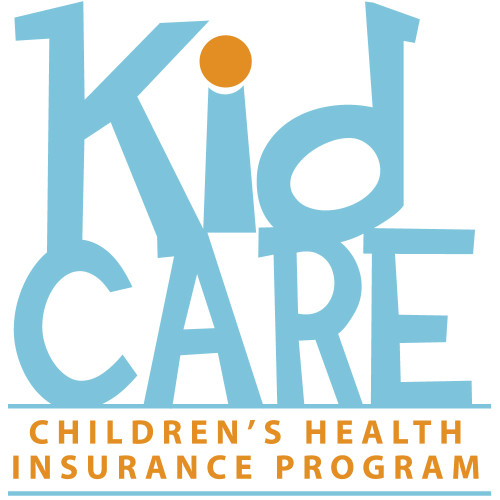
You and your child will get to know the pediatrician well in the first 12 months. Appointments will occur at 3-5 days after birth, 2 weeks, 2 months, 4 months, 6 months, 9 months and 12 months.
Preventive visits will cover:
- Developmental screening
- Hearing and vision
- Height and weight measurements
- Iron supplements for some infants
- Obesity screening and counseling
- Oral health risk assessment
- Anemia screening at 12 months
- Lead screening at 12 months
- Newborn Metabolic Panel
- Immunization Vaccines
The provider may talk about:
- Are you ok? Parental well-being including depression, stress, how to handle unsolicited advice and family roles
- What to expect: Infant behaviors to expect and how to adjust your lifestyle
- Who’s hungry? How to recognize baby hunger cues, keeping baby hydrated, burping techniques and guidance on breastfeeding and formula
- Staying Safe: Car seat installation and use, smoking in the household, preventing falls and home safety
- The day-to-day: Creating a routine and tips on everyday care
- Is anyone sleeping? Learning baby’s sleep and wake cycles, where baby sleeps and crib safety
- Playtime and developmental activities: Encouraging tummy time, rolling over and newborn reflexes
- Oral healthcare: Tips on maintaining a healthy mouth starting in infancy
Sources
American Academy of Pediatrics. Recommendations for Preventive Pediatric Health Care, https://www.aap.org/en-us/Documents/periodicity_schedule.pdf.
Centers for Medicare and Medicaid Services. From Coverage to Care, go.cms.gov/c2c.

Lifelong healthy behaviors begin in early childhood.* Start a healthy habit by making the suggested preventive care appointments for toddlers. Recommended visits to the medical provider are at the ages of 12 months, 15 months, 18 months, 24 months, and 3 years.
Preventive visits will cover:
- Developmental screening
- Hearing and vision
- Height and weight measurements
- Iron supplements for some infants
- Obesity screening and counseling
- Oral health risk assessment
- Autism screening at 18 months and 24 months
- Anemia screening at 12 months and 24 months
- Lead screening at 12 months and 24 months
- Immunization Vaccines
- Regular dentist visits or as recommended by the dentist
- Fluoride varnish at 18 months
The provider may talk about:
- Family support: Adjusting to the child’s developmental changes and behavior, balancing work and home and resolving parenting disagreements
- Learning to communicate and socialize: how to handle separation anxiety, child’s communication and helping with shared attention
- The day to day: Routines like family time, bedtime, teeth brushing and nap times
- Who’s Hungry? Eating, nutrition and your child’s appetite
- Encouraging language: simple words and phrases, reading, singing and talking
- Healthy teeth: finding a dentist, teeth brushing and using a bottle
- Safety at home: proper use of car seats, pedestrian safety, access to windows and firearm safety
- Are you finally getting some sleep? Sleep routines, waking in the night and sleeping with a bottle
- Temper tantrums and discipline: How to predict conflict, creating distractions and being consistent.
*US Department of Health and Human Services, Healthy People 2020, www.healthypeople.gov.
Sources
American Academy of Pediatrics. Recommendations for Preventive Pediatric Health Care, https://www.aap.org/en-us/Documents/periodicity_schedule.pdf.
Centers for Medicare and Medicaid Services. From Coverage to Care, go.cms.gov/c2c.

Wrangle your active preschooler once a year for well-child visit at ages three, four and five.
Preventive visits will cover:
- Hearing (at ages 4 and 5) and vision
- Height and weight measurements
- Obesity screening and counseling
- Oral health risk assessment (at age 3)
- Immunization Vaccines
- Regular dentist visits
- Fluoride varnish
- Review of development progress and childhood behaviors
The provider may talk about:
- How’s family life? Family decisions, sibling rivalry, and work and home balance
- Improving language and reading: Singing, talking, describing, observing, and reading books
- Being social: Playing with peers, interactive games and how to find play opportunities.
- Getting active: Promoting physical activity and limiting sedentary activities
- Oral health care: regular dental visits
- Safety at home: proper use of car seats, pedestrian safety, access to windows and firearm safety.
- School readiness: Social readiness, fears, and familiarity with structure
- The day to day: Establishing healthy personal habits
- Exposure to TV and media: What to watch and for how long
- Getting out in the community: activities and community involvement
Sources
American Academy of Pediatrics. Recommendations for Preventive Pediatric Health Care, https://www.aap.org/en-us/Documents/periodicity_schedule.pdf.
Centers for Medicare and Medicaid Services. From Coverage to Care, go.cms.gov/c2c.

Make room in the busy schedule of your elementary age child for an annual well-child visit. Maintaining healthy habits, like preventive health exams, will positively impact the health of a child for life.
Preventive visits will cover:
- Obesity screening and counseling
- Vision
- Hearing
- Cholesterol
- Blood pressure
- Early puberty
- Behavioral assessment
- Developmental surveillance
- Sexual maturity rating (at age 10)
- Scoliosis (females at age 10)
- Immunization Vaccines
The provider may talk to you about:
- Are you ready for school?: Teacher-parent communication, bullying, afterschool care, friendships, and handling disappointment and fear
- Is everything going ok at home?: Family time, routines, temper problems and socialization.
- Healthy eating and activity: Well balanced diet, eating fruits and vegetables and 60 minutes of exercise a day
- Safety: Crossing the street, using a booster seat, swimming, fire drills and carbon monoxide, child sexual abuse prevention and firearms.
- Growing and Changing: Readiness for middle school, puberty onset, personal hygiene, growth spurts, loss of baby fat, gaining muscle and menstruation and ejaculation (9-12 year olds)
Sources
American Academy of Pediatrics. Recommendations for Preventive Pediatric Health Care, https://www.aap.org/en-us/Documents/periodicity_schedule.pdf.
Centers for Medicare and Medicaid Services. From Coverage to Care, go.cms.gov/c2c.
Teenagers’ bodies change, high school approaches and they are faced with peer pressure and the challenges of the future. A trusted provider will assist your family in guiding your teen to make healthy decisions. Your teen should see a provider once a year.
Preventive visits will cover:
- Behavioral assessments
- Vision screening
- BMI, height and weight measurements
- Obesity screening and counseling
- Alcohol and drug use screening
- Oral health risk assessment
- Blood pressure screening
- Depression screening
- STD prevention counseling and screening, including HIV and cervical dysplasia
- Immunization Vaccines
Your provider may talk about:
- Growth and development: Body image, healthy eating and physical activity
- Social and academic competence: Family relationships, friends, activity in the community and academic performance
- Emotional well-being: Mental health, sexuality, mood regulation and coping
- Risk reduction: Tobacco, alcohol, other drugs, pregnancy and STIs
- Emotional well-being: Mental health, coping, mood regulation and sexuality
- Violence and injury prevention: Safety belt and helmet use, driving under the influence, firearms, dating violence and bullying
Sources
American Academy of Pediatrics. Recommendations for Preventive Pediatric Health Care, https://www.aap.org/en-us/Documents/periodicity_schedule.pdf.
Centers for Medicare and Medicaid Services. From Coverage to Care, go.cms.gov/c2c.
Resources for Parents
HealthyChildren.org
Find the answers to your questions about your child’s development and health in every stage of growing up. This website is created and distributed by the American Academy of Pediatrics. Healthychildren.org
Bright Futures
Bright futures provides families with age-specific information about provider visits. The site includes checklists for parents, developmental milestones, and links to tools to help parents track their child’s health records and immunizations. This website is also provided by the American Academy of Pediatrics. brightfutures.aap.org
From Coverage to Care
Find information about health insurance: how to get it, when to use it, and what is covered. This is a helpful resource for everyone in the family. Age specific information is available for each family member. This website is developed by the Centers for Medicare and Medicaid Services, part of the US Department of Health and Human Services. go.cms.gov/c2c


